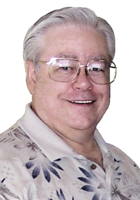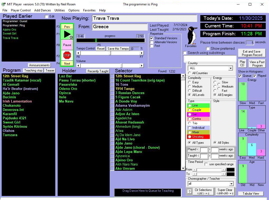
|
The Society of Folk Dance Historians (SFDH)
Suggestions for International
[
Home |
About |
Encyclopedia | CLICK AN IMAGE TO ENLARGE |

|
 These are a few suggestions for programmers of recreational international folk dancing. Yeah, they are just suggestions!
These are a few suggestions for programmers of recreational international folk dancing. Yeah, they are just suggestions!
- Make sure you are familiar with the equipment to be used.
- Use an informed assistant when possible.
- Play the music for the teacher if required.
- Keep about a 50/25/25 percent balance among easy, moderate, and hard dances.
- Keep about an 80/20 percent balance between line and couple dances.
- Try to keep 80 percent of the dancers dancing 80 percent of the time.
- Set the first 6 to 8 dances at an easy level to keep beginners interested.
- Use a good sprinkling of easy dances throughout the evening so that beginners can stay involved, not get bored, and leave after the first hour.
- Include a number of advanced dances toward the middle and end of the evening to keep advanced dancers happy.
- A good rule-of-thumb is to move from easier to more difficult dances as the evening progresses.
- Play a good crowd pleaser after each esoteric dance to keep the beginners spirit alive.
- Include five to seven requests.
- Have the requests written on a request sheet with a two-dance limit and use it only as a guide for your programming.
- Program dances taught previously for the next three weeks (unless they simply didn't go over well).
- Program popular dances from recent workshops in the area.
- Select a time for announcements (and make a donation collection with the donation jar if payment is not made at the door, unless there is no donation).
- Try not to do the same dances, even popular ones, every week by checking previous programs to see what has been done (there are hundreds of great dances and they all cannot be played in a three-hour evening).
- Keep time between recordings to a minimum.
- If you try playing a rather esoteric tune that is not being danced, pull it and revert to the more familiar one.
- Dispense with teasers — they slow things down and dancers can usually pick up the dance on the go.
- If there is a setup time, such as for a square dance or contra, then a teaser can be played.
- Select enough dances so that you are at least five or six ahead of what's being played.
- Use a greenboard or large notepad, for examples, to notate the dance being played (and be sure each is spelled correctly with the correct diacritic marks) and keep up to six ahead.
- Draw a line through a dance once it has been played.
- If the crowd is not dancing, you should revise your programming strategy.
- Try to keep a balance between national areas.
- Play one of a selection of "standardized" dances at evening's end.
- Download the MIT Player (snapshot above) for your laptop computer and add .MP3 music files.
INTO THE FUTURE, 2021
With our folk dance tunes now being digitized and placed on computers that have separate large screen displays for dancers to view, using a greenboard and drawing lines is no longer needed!
DOCUMENTS
- Dick Oakes, an article.
- Is it Time for a Change in Your Program?, an article.
- MIT Player, an article.
Used with permission of the author.
This page © 2021 by Ron Houston.
Please do not copy any part of this page without including this copyright notice.
Please do not copy small portions out of context.
Please do not copy large portions without permission from Ron Houston.